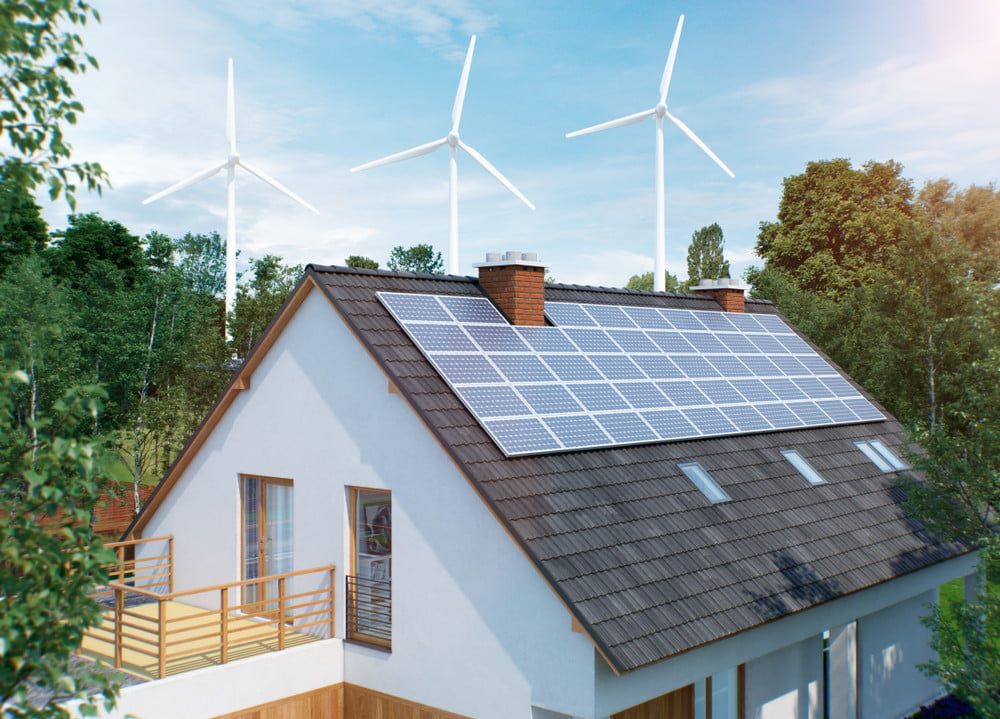Begin with Energy Effectiveness
Making the home energy-efficient prior to mounting a renewable resource system will certainly save money on electrical energy expenses. Energy-efficiency renovations can save power and protect against heat or cool air from getting away. Homeowners can obtain home power evaluations and install appropriate insulation, air sealing, and ENERGY STAR- certified home windows, heating cooling tools, cooking area appliances, and illumination systems. Smart water usage, offered daytime, proper landscaping, and indigenous plants can also boost home effectiveness.
Integrate Renewable Resource
Once home energy-efficiency enhancements have actually been made, house owners are best placed to take into consideration choices for setting up a renewable resource system.
Geothermal Heat Pumps
Geothermal heat pumps, likewise referred to as ground source or water source heat pumps, transfer warm into and out of the home, using the ground as both a warmth source and a warmth sink. These pumps can attain performances 2 to 3 times above commonly made use of air source heat pumps (ASHPs), since they depend on the reasonably regular ground temperatures to move heat to or from a home. Across much of the United States, the temperature level of the upper 10 feet of the ground remains in between 45deg; deg; F and 75 deg; F, and frequently between simply 50deg; deg; F and 60 deg; F.At site renewable-energy-advisors.com from Our Articles By comparison, air temperatures can vary, over the course of a year, from below 0deg; deg; F to over 100 deg; F. Geothermal heatpump are lasting and long lasting, and specially outfitted systems can additionally provide warm water throughout the summer season. While buying and setting up a geothermal heatpump sets you back more than mounting an ASHP system with comparable capability, the added costs can be recovered with power financial savings in 10 to 15 years compared to ASHPs.
Solar Water Home Heating
Solar hot water heater utilize sunlight to heat water for the home. Solar water heater utilize shielded tank and solar batteries to record and keep warm from the sun, and heat circulating water. Solar hot water heater need a back-up system, such as traditional warm water heating units, when there is insufficient sunlight.
Solar Energy Solutions
Solar photovoltaic (PV) systems transform sunlight right into electricity. Solar power can generate all or a few of a homes electricity requires, depending upon the number of solar panels made use of, and can heat up water as well. With adequate sunshine, PV systems can harness power in cold and hot environments. The fundamental building block of a PV system is the solar battery. Multiple solar batteries create modules called solar panels that vary in outcome from 10 to 400 watts. Panels are designed to survive storm and hailstorm damages and are immune to degradation from ultraviolet rays. They are very reliable and require little maintenance. Panels are usually organized with each other on a structure rooftop or at ground degree in a rack to form a PV array. The range can be installed at a fixed angle or on a monitoring device that complies with the sun to make best use of sunshine capture.
Wind Power Systems
Tiny domestic wind energy systems can generate all or some of a homes power requirements(if adequate land area and typical wind rates are readily available) and can be integrated with solar and battery storage space to supply emergency backup power. Wind turbines make use of the activity of the wind to turn a shaft connected to a generator, that makes power. The dimension of the wind turbine and the speed of the wind determine how much power it will certainly make. Typical property wind power systems have power scores ranging from 5 to 30 kilowatts. To be an appropriate prospect for a wind system, a home owner needs to have at least one acre of land and stay in a location that has an average annual wind rate of at the very least 10 miles per hour. The turbine tower height must be selected based upon the elevation of nearby wind obstructions, such as buildings or vegetation, and are commonly 60 to 140 feet high.
Approximated Prices
Federal and state rewards can substantially minimize the ahead of time expenses of setting up a renewable resource system. The Data Source of State Rewards for Renewables Performance can aid homeowners find rewards near them. And also, renewable energy systems can spend for themselves gradually. Grid-connected solar and wind systems are especially cost-efficient because excess power is sent back to the power grid and can gain home owners direct refunds or credit scores from local utility service providers.
- Solar PV systems cost regarding $3 per watt mounted. A 7,000 watt (7 kilowatt) system for that reason sets you back about $21,000 to install. Such a system would offer 20 to 35 kilowatt-hours of electrical energy daily, depending upon climate, and might satisfy most of a households
- need. Solar hot water systems can fulfill 50% of the warm water requires for a household of 4 and normally price between $5,000 and $7,000 to mount.
- Little wind energy systems set you back an average of $5 per 120 kilowatts to set up. Purchasing and installing a system can range from $10,000 to $70,000, relying on neighborhood zoning, allowing, and utility affiliation prices.
Marketing Power
Several property owners can market any kind of excess power their solar and wind systems create back to their utility providers and, consequently, pay off their renewable resource investments faster. A lot of states have developed web metering rules for clients who create excess electricity through solar, wind, or other systems and feed it into the grid. In net metering, a bi-directional meter documents both the power the home draws from the grid and the excess electrical power the property owners system feeds back into the grid.

